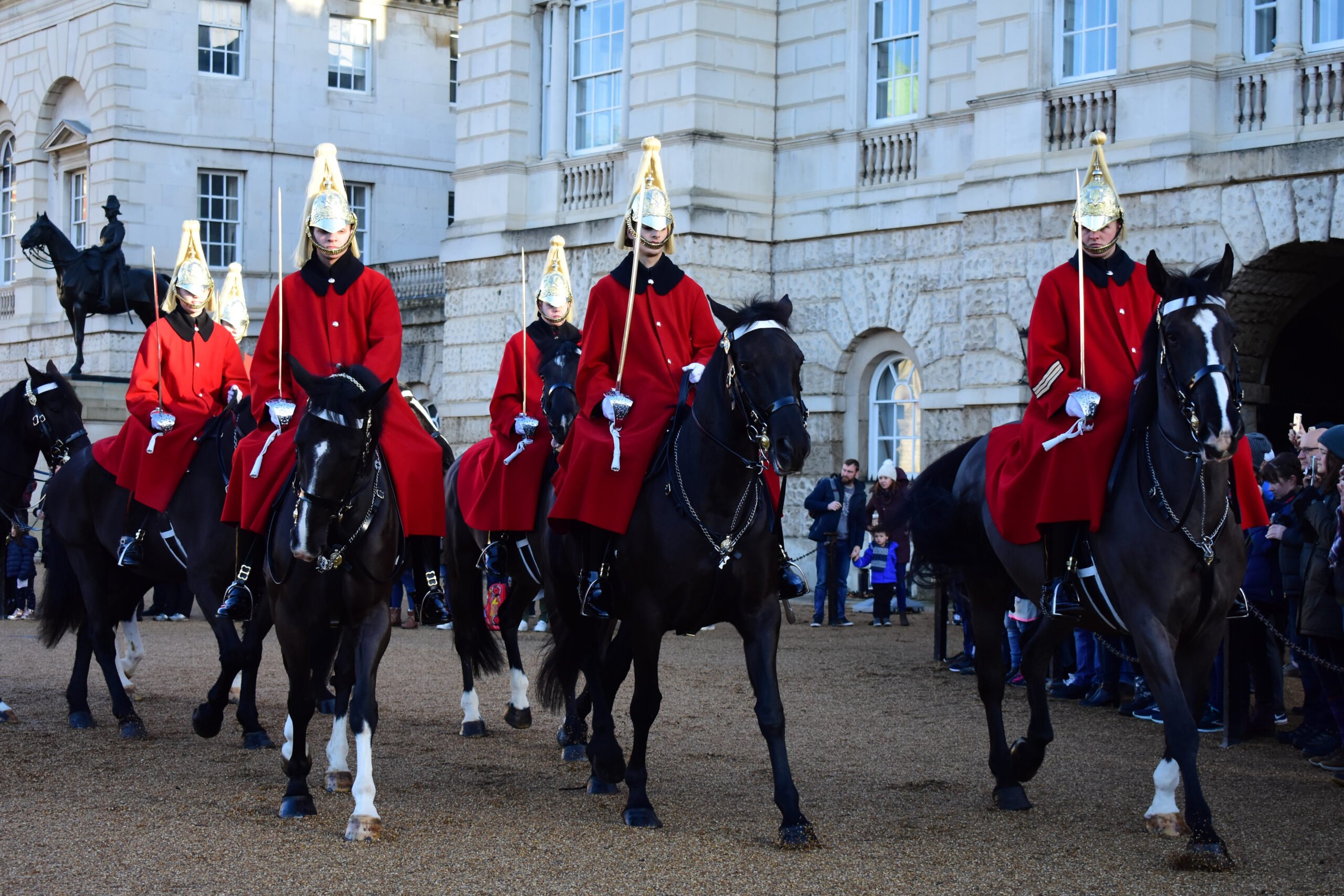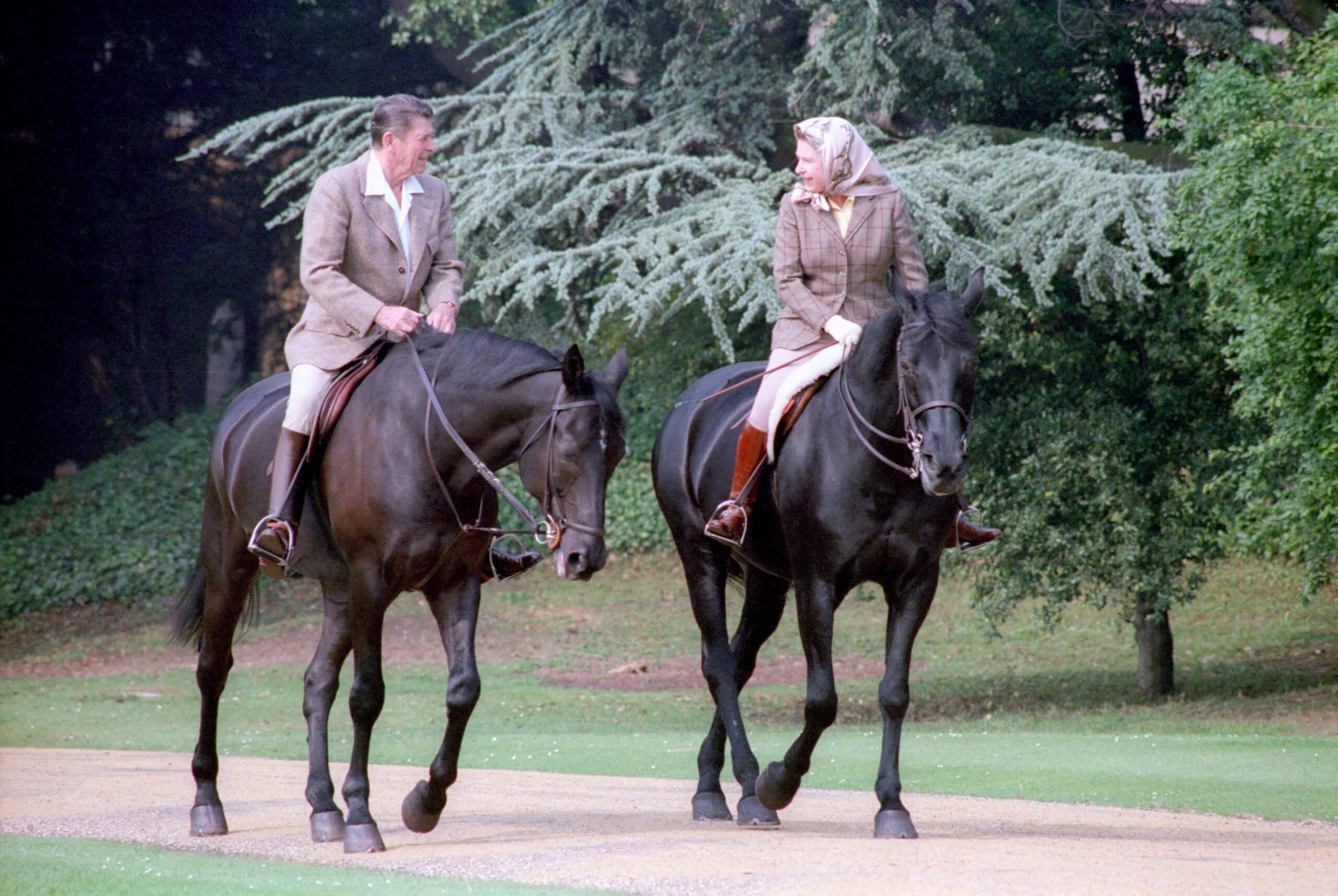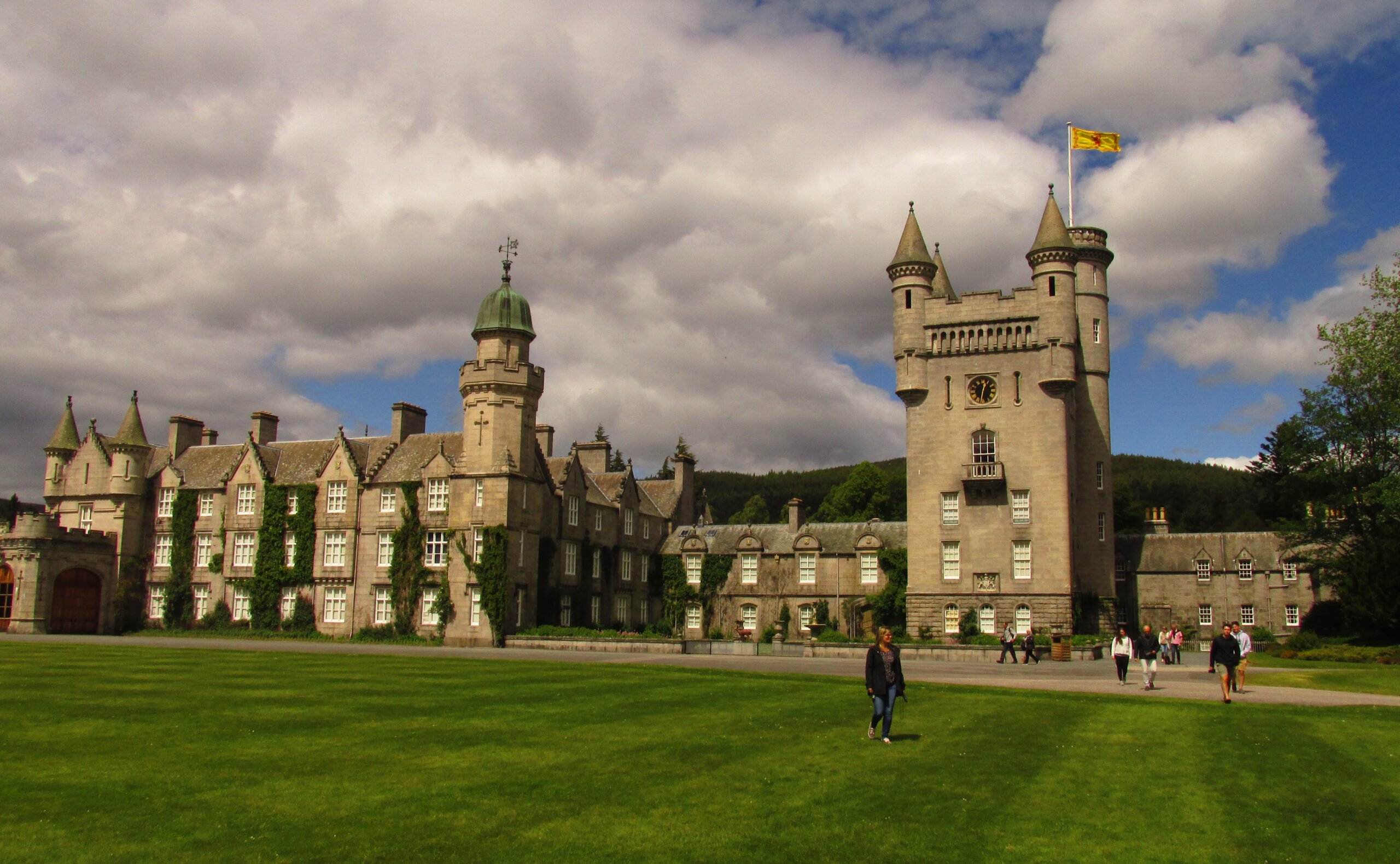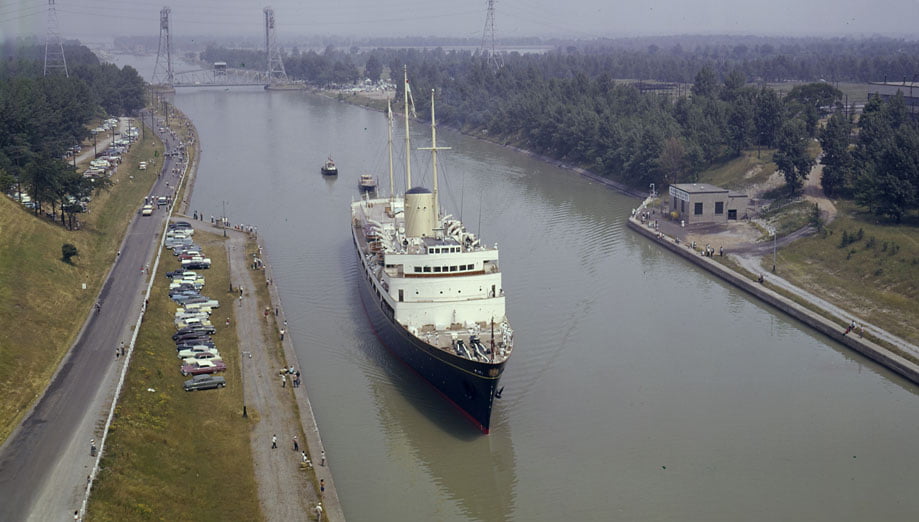Home - Royal Families - The Life of Queen Elizabeth II - At Home

When Elizabeth moved to Buckingham Palace as a girl, it was a daunting, monumental place, characterised by long, ill-lit corridors, gloomy barred windows and antiquated plumbing. Her parents soon set about decorating and modernising their living quarters and turning the vast monument into a home. Elizabeth and Margaret, meanwhile, delighted in racing down the long corridors, and exploring the magnificent 40-acre grounds, which included a large lake.
German bombers targeted the Palace, the symbolic heart of the monarchy, during the war and it suffered nine direct hits. King George VI’s insistence on remaining in his London home, despite the danger, was greatly admired by the British public. When her father died, the Queen was expected to move from Clarence House to Buckingham Palace, despite Prince Philip’s resistance. It had always been the monarch’s home and represented continuity.
The principal suite of state rooms, at the rear of the Palace, centres on the bow-windowed Music Room, flanked by the Blue and White Drawing Rooms. The Picture Gallery, adorned by exhibits from the Royal Family's outstanding private collection, including works by Rembrandt, Van Dyck, Rubens, Canletto and Vermeer, lies at the centre of the suite. Other rooms include the Green Drawing Room, the State Dining Room and the Throne Room. The 120ft-long Ballroom was opened by Queen Victoria in 1856 with a ball celebrating the end of the Crimean War. It is used for state banquets and formal receptions. Underneath the state rooms is a less grand suite of rooms, used for informal entertaining, while the sovereign's private apartments are in the North Wing.
In all, the Palace contains 19 state rooms, 52 principal bedrooms, 188 staff bedrooms, 92 offices, and 78 bathrooms. It is the headquarters of the royal household, and the workplace of some 800 people. Every year, over 50,000 people visit the Palace as guests to banquets, lunches, dinners, receptions and the royal garden parties. In addition, the state rooms are open to the public in the summer. The balcony is world-famous, a venue for royal appearances since 1851, while the Palace remains a focal point for public gatherings at times of national celebration and tragedy.

Windsor Castle had a special place in the Queen’s heart. It is steeped in romance and history, tracing its origins back to William the Conqueror, who built a wooden castle keep on a chalk bluff rising above the River Thames. Its great bulk dominates the skyline, an accretion of medieval walls, towers and rooftops.
Successive sovereigns have made their mark on the Castle. Edward III lavished vast sums of money on the Castle buildings, while Edward IV founded St. George’s Chapel, the symbolic headquarters of the Knights of the Garter, in 1475. Charles II, asserting the restoration of the monarchy, made extensive alterations to the state apartments, creating a set of extravagant, baroque interiors. George III and George IV renovated and rebuilt Charles II’s state apartments at colossal expense, producing the current design, a fine example of late Georgian taste, and an expression of the power and dominance of a nation that had emerged victorious from the recent Napoleonic Wars.
The Castle covers 13 acres and contains over 1,000 rooms. It is a kind of village, an eclectic jumble of buildings that span ten centuries of history. The lower ward includes the Albert Memorial Chapel and St. George’s Chapel, the burial place of ten sovereigns. The upper ward includes the monarch’s private apartments, visitors’ apartments, and the royal library (home to the drawings, prints, manuscripts and books in the Royal Collection). The Castle is the headquarters of several departments of the royal household, and also houses the Royal Archives and Royal Photograph Collection. Over 350 people live there, from domestic staff and archivists to retired courtiers occupying grace-and-favour houses.
The Queen spent the war years at Windsor, along with her sister Margaret, and enjoyed riding in Windsor Great Park, putting on Christmas pantomimes and socialising with the Castle Company of the Grenadier Guards, whose job it was to guard the royal family. More recently, she would retreat to her beloved Castle for peaceful weekends, and on occasion hosts state visits for overseas monarchs or heads of state there, presiding over state banquets in St. George’s Hall, or – in the case of President Ronald Reagan – riding in Windsor Great Park. The 1992 fire that caused damage to much of the upper ward was a devastating personal blow. Restoration works, paid for by opening Buckingham Palace to the public, cost £37 million.

Sandringham is a rambling neo-Jacobean mansion, built in red brick, with mock Elizabethan chimneys. It bears the imprint of successive generations of the royal family, from the Edwardian rococo of the drawing room to the pea-green dining room, hung with Goya tapestries, that is the legacy of the Queen Mother.
At 20,000 acres, Sandringham is one of the largest estates in Norfolk. There is excellent shooting, and venison from the estate is regularly sent to Buckingham Palace. The estate is also famous for its huge harvest of samphire and hazelnuts. The Queen was in charge of the horses, gun-dogs, cattle and pigs, and also bred and raced racing pigeons there. Sandringham Church, just a few hundred yards from the house, is a monument to the people who have lived and worked on the estate, not least generations of royals, including both her grandfather and father, who died at Sandringham.

Since then the Castle has been passed down by family inheritance; like Sandringham, Balmoral was one of the Queen’s private family estates, and is not part of the Crown estate. Traditionally she spent the shooting season – August, September and part of October – in Scotland. The Castle is surrounded by a working estate of nearly 50,000 acres, managed by an official known as the Resident Factor. The estate includes Ballochbuie Forest, saved from timber cutters by Queen Victoria, the Loch Muick and Lochnagar Wildlife Reserve, and land maintained for deer, grouse and salmon. A malt whisky distillery located on the Balmoral Estate produces the Royal Lochnagar Single Malt whisky. More than 20 Highland, Fell and Haflinger ponies are kept for trekking and deer retrieval during the stalking season.
Queen Victoria’s presence is very palpable at Balmoral; her specially designed thistle wallpaper still hangs on the wall, her tartan rugs and curtains are still in use, and her specially designed tartan and thistle chintzes still dominate the furnishings. Scottish landscape portraits adorn the wall, alongside endless ranks of antlers, and a statue of the Queen’s great-great-grandmother and her consort still stands in the gardens. Queen Victoria created the Riverside Walk upriver from the Castle, along with a series of graceful suspension bridges, and it is still possible to walk in her footsteps.
The Queen visited Balmoral every summer since her childhood, originally staying at Birkhall, a house on the Balmoral estate that was more recently used by King Charles. The young Princess Elizabeth loved the outdoors life, the picnics on the shores of Loch Muick, the Scottish tea-time treats (scones, baps, bannocks), the venison for dinner and the pipe music that invariably accompanied the evening meal, played by the King’s own tartan-clad pipers.
Today Balmoral is not just a holiday home for the royal family – providing shooting, beautiful scenery and the outdoors life that the Queen loved. It is also a well-managed working estate that attracts some 85,000 visitors a year.

When the Queen launched Britannia in April 1953 she said that “a yacht was a necessity, and not a luxury for the head of our great British Commonwealth, between whose countries the sea is no barrier, but the natural highway.” By the mid-1990s, however, the high cost of running the ship became a matter of political debate, and in December 1997 Britannia was decommissioned at Portsmouth. A national competition was then held to find a permanent new home for the yacht and Edinburgh triumphed. The vessel is now moored in the city’s port of Leith and serves as a major tourist attraction.
The tradition of royal yachts goes back to the days of Charles II, and there have been more than 80 vessels used by British sovereigns. Britannia was built by the Clyde shipbuilders John Brown & Co. at a cost of £2,098,000 and replaced the ageing Victoria and Albert III. The word ‘yacht’ may give the impression of a pleasure vessel, but Britannia served as a working palace, with enough room to hold substantial receptions, banquets and accommodate up to 250 guests.
The Queen’s designer Sir Hugh Casson created a mixture of style and comfort in the ship’s interior, and its furniture included such choice items as Queen Victoria’s satinwood desk and Hepplewhite chairs taken from Victoria and Albert III. A staff of up to 45 members of the royal household made the royal family and their guests comfortable, while a crew of about 240 Royal Yachtsmen went about their work as quietly as possible, wearing soft-soled plimsolls and giving hand signals rather than shouting orders.
Britannia did not function solely for royal tours and ambassadorial duties. It also provided glamorous honeymoon accommodation for four royal couples, Princess Margaret and Antony Armstrong-Jones (1960), Princess Anne and Captain Mark Phillips (1973), the Prince and Princess of Wales (1981), and the Duke and Duchess of York (1986). Nor did the royal tradition of nautical romance end with Britannia’s decommissioning: in July 2011 Zara Phillips, the daughter of Princess Anne, and her fiancé Mike Tindall hosted a cocktail party for 150 guests on the yacht in Edinburgh, adding another glitzy chapter to the Royal Yacht Britannia’s distinguished history at the heart of the royal family.
Like Britannia, the Royal Train conjures up a picture of journeys conducted in sumptuous luxury. But the reality is rather different. For a start, there is no single Royal Train but rather a set of eight carriages fitted out to the specifications of the Queen, Prince Philip and King Charles. These are pulled in various combinations by either of two identical Class 67 diesel locomotives, Royal Sovereign and Queen’s Messenger, both of which were built in 1999.
Carriage exteriors are painted predominantly ‘royal claret’ with a grey roof, while the interiors are relatively plain and utilitarian, since the train is designed primarily for royal tours, official engagements and business meetings. The Queen’s saloon, which came into service in 1977, was a 75-foot-long carriage consisting of a bedroom, bathroom and sitting room. The small pastel-coloured bedroom was lit by a combination of strip lighting and reading lamps and contained a single bed, bedside table (with a radio) and chair. Her sitting room had an extendable dining table, a desk and a sofa and armchairs.
Royal trains have in fact been in existence since 1842, when Queen Victoria travelled from Slough to Paddington on 13 June. Her train consisted of a saloon and six other carriages and was pulled by the steam engine Phlegethon. In more recent times, the Royal Train came into its own in 1977, whisking the Queen around Britain during her Silver Jubilee, and it is still in constant use.
Journeys on the train are always organised so as not to interfere with scheduled services. Drivers are chosen for their experience and skill and are expected to start and stop the train so smoothly that the royal travellers can barely detect any movement. The train is always halted at nightfall in a secluded siding to give passengers a peaceful night’s sleep.